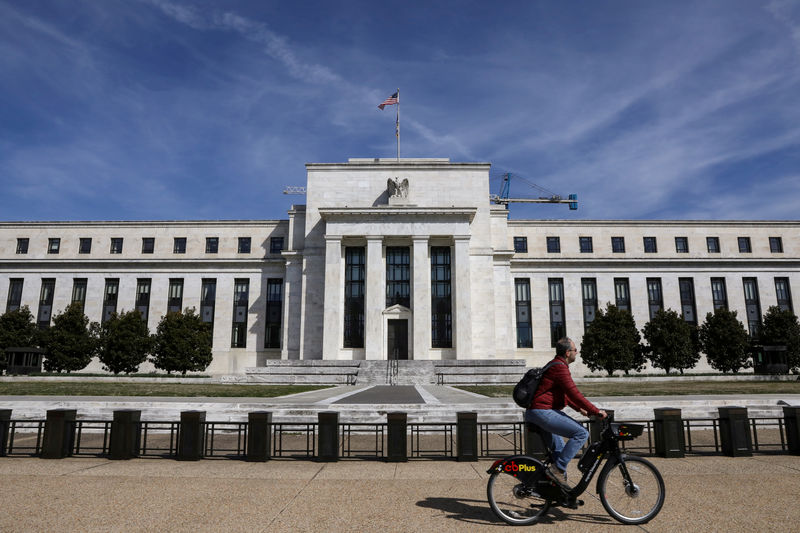By Pete Schroeder
WASHINGTON (Reuters) - The U.S. Federal Reserve on Thursday unveiled a final package of rules easing capital and liquidity requirements for domestic U.S. and foreign banks that were originally introduced following the 2007-2009 global financial crisis.
The changes, which should reduce the compliance burden and free up funds for U.S. Bancorp (N:USB), Capital One (N:COF) and PNC Financial (N:PNC), among others, mark another win for the industry after the Fed also relaxed rules on derivatives trades and banks' annual health checks.
Thursday's package stems from bipartisan legislation passed by Congress in May 2018 that rewrote parts of the 2010 Dodd-Frank financial reform law.
That 2018 law ordered the Fed to reduce the burden on community and regional lenders, but progressive Democrats and consumer groups are likely to criticize the central bank for giving larger banks too much leeway with its final changes.
Randal Quarles, the Fed's top regulatory official, said the package allows the Fed to more closely tie stricter rules to risks and retains the toughest requirements for the largest firms.
But Governor Lael Brainard voted against the easier rules, saying in a statement they go beyond the law passed by Congress and would "weaken the safeguards at the core of the system before they have been tested." Brainard has regularly opposed recent efforts at the Fed to ease bank rules.
The Fed on Thursday said the changes, which it first proposed in October last year, aim to more closely tailor regulations to the riskiness of firms' businesses.
The final domestic rules, which are nearly identical to the 2018 proposal, establish tiers of regulations for larger U.S. banks. Domestic banks with under $700 billion in assets, which includes all but a handful of the nation's largest firms, would enjoy some degree of relaxed capital and liquidity rules.
Fed staff estimated the final rules would lower capital requirements by about 0.6% and liquidity requirements would drop by about 2% for all affected banks.
Globally systemically important U.S. banks, including JPMorgan Chase & Co (N:JPM), Bank of America Corp (N:BAC), Citigroup Inc (N:C), Goldman Sachs Group Inc (N:GS) and Morgan Stanley (N:MS) would not benefit from the changes however.
On Thursday the Fed also finalized a new regulatory regime for foreign banks operating in the United States. The rules relax capital, liquidity and stress testing requirements for subsidiaries of foreign banks but retain stricter standards for firms that engage in riskier activities like short-term funding.
Thursday's rules package also includes a relaxed schedule for when foreign and domestic banks must submit "living wills" to the regulator detailing how they could be safely dissolved.
In a win for foreign banks, the Fed said it was no longer considering establishing its own stricter liquidity requirements for foreign bank branches. Instead, the Fed will work with international regulators on the issue. The Fed had previously considered stricter rules for branches out of a concern that overseas lenders could use them to shield assets from oversight.
But the Fed opted to apply a higher liquidity standard to all larger lenders in its final rule.
In its original proposal, the Fed sought comment on setting a reduced liquidity ratio for larger firms somewhere between 70% and 85% of the full requirement for global banks. In the final rule, the Fed stuck to the high end of that scale for banks with over $250 billion in assets.
